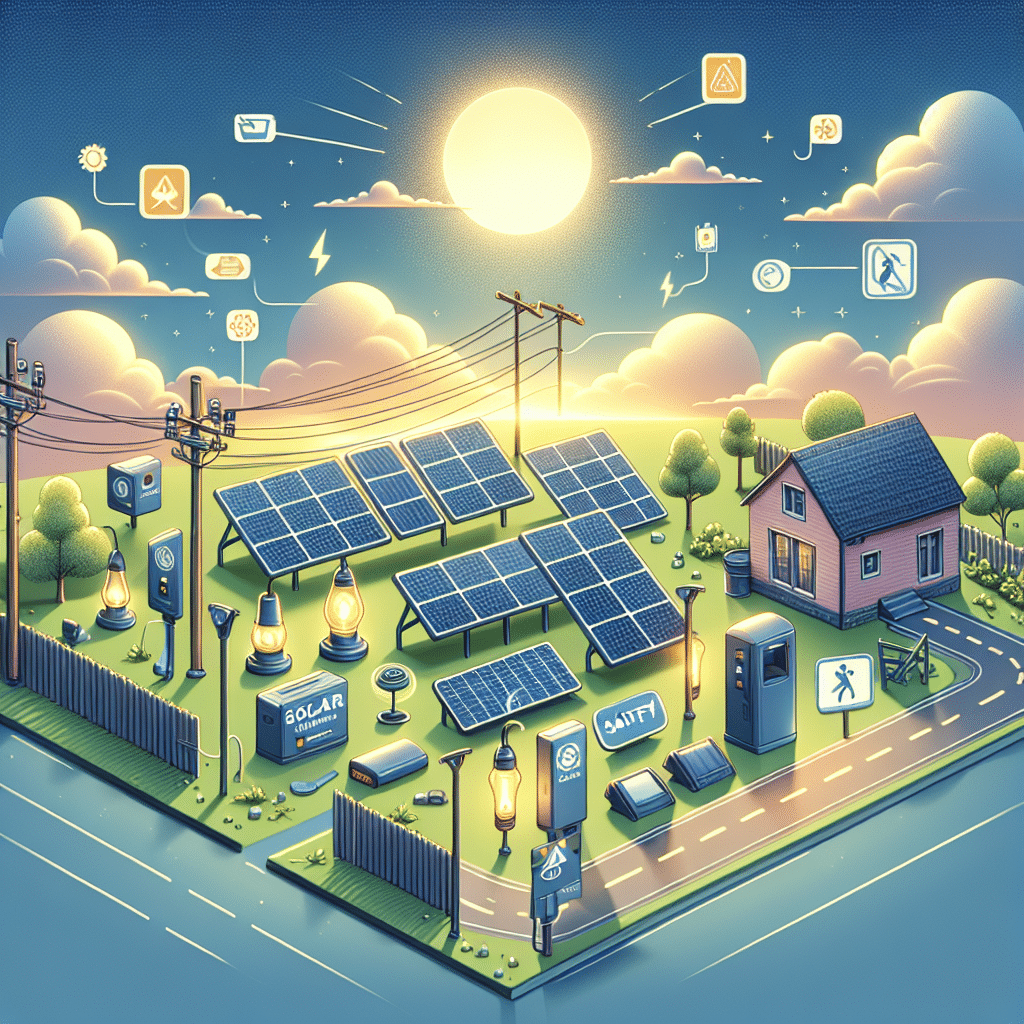Safety Tips for Solar Outdoor Devices
Understanding Solar Outdoor Devices
Solar outdoor devices harness the power of sunlight to operate, offering eco-friendly solutions for various applications such as lighting, fountains, and garden equipment. While these technologies can enhance outdoor spaces, ensuring safety during installation and use is vital. Proper understanding and precautionary measures can mitigate risks associated with solar-powered devices.
1. Selection of Quality Devices
Choose reputable manufacturers for solar products. Thorough research into the brand and its product ratings will assist in identifying durable and reliable devices. Opt for products that meet safety standards and certifications, such as IEC 61215 for photovoltaic modules and UL certification for safety.
2. Installation Safety
A. Proper Location
Ensure that solar panels are installed in areas that receive direct sunlight throughout the day. Avoid placing them in shaded areas or locations where they can be easily knocked over or obstructed.
B. Secure Mounting
Use appropriate mounting hardware compatible with your solar device and ensure that all fixtures are secured to prevent them from loosening over time due to weather conditions.
C. Ground or Wall Installation
When installing devices on the ground, make sure that they are easily visible and away from foot traffic. For wall-mounted devices, use durable anchors to ensure they can withstand wind and weather fluctuations.
3. Electrical Safety
A. Battery Handling
Many solar devices have built-in batteries. Always follow the manufacturer’s guidelines when handling or replacing batteries. Ensure that the batteries used are of the correct type and compatible with the device.
B. Wiring Inspection
Regularly inspect wires for damage, particularly at connection points. Utilize outdoor-rated cables to withstand environmental conditions. Secure any exposed wires to prevent accidental contact or tripping hazards.
C. Disconnect During Maintenance
Before performing any maintenance or repairs, disconnect your solar device from any power source. This minimizes the risk of electric shock and enhances overall safety.
4. Weather Considerations
A. Storm Preparedness
Before severe weather events, ensure that solar devices are secured and, if necessary, removed from high-risk areas. Consider using protective covers for devices that are vulnerable to wind or hail.
B. Temperature Awareness
Recognize that extreme heat can affect battery performance, while cold temperatures may cause solar panels to lack efficiency. Monitor these conditions to avoid unexpected failures.
C. Moisture Management
Make sure solar devices are rated for outdoor use and are weatherproof. Inspect seals and junction boxes to ensure they are watertight. This helps prevent water intrusion which can lead to electrical hazards and device failure.
5. Child and Pet Safety
A. Location Awareness
Position solar devices in places that are out of reach of children and pets to avoid tipping over or interference. Ensure that all cables are secured and out of the way to prevent tripping.
B. Toxic Components
Some batteries contain hazardous materials. Educate family members about the importance of not tampering with solar devices, especially when they require battery replacements.
6. Wildlife Protection
A. Bird and Animal Deterrents
If using solar devices in gardens or yards, implement deterrents to protect wiring from animals that may chew through cables. Usage of flexible tubing can shield wires from animal damage.
B. Avoiding Attracting Wildlife
Be mindful of the design of solar garden lights or fountains. Devices that attract insects may in turn draw larger wildlife, which could lead to disturbances or potential hazards.
7. Maintenance and Inspections
A. Regular Cleaning
Keep solar panels and devices clean for optimal performance. Use a soft cloth or non-abrasive sponge with mild soap to clean panels. Avoid using aggressive chemicals that may damage components.
B. Scheduled Inspections
Create a maintenance schedule to regularly check solar devices for wear and tear, particularly after severe weather. Look for rust, damage, or corrosion, and address any issues promptly.
C. Component Replacement
Whenever components require replacement, use manufacturer-recommended parts to ensure compatibility and safety.
8. Emergency Preparedness
A. Fire Safety
Check your solar devices for overheating signs, such as discolored or melted parts. In the event of a fire, have a fire extinguisher rated for electrical fires nearby.
B. Backup Power Plan
In some cases, solar devices may fail to operate when required. Establish a backup plan, such as having battery-operated versions or traditional alternatives for essential operations during emergencies.
9. Local Regulations and Guidelines
A. Compliance with Local Laws
Understand local regulations regarding solar installations. Some areas may have specific building codes or requirements that must be adhered to for safety and zoning compliance.
B. Seek Professional Help
When in doubt, consult with professionals regarding the installation or maintenance of solar devices. Experts can ensure that all safety measures are executed properly and according to regulations.
10. Proper Disposal
A. Recycling Old Devices
When it’s time to replace your solar device, consider recycling old components. Many manufacturers offer recycling programs for solar panels and batteries to promote environmental responsibility.
B. Safe Battery Disposal
Batteries can be hazardous if not disposed of correctly. Use designated battery recycling centers to handle disposal, ensuring compliance with local regulations.
11. User Manuals and Resources
A. Trust the Manual
Always refer to the user manuals of your solar devices for specific safety recommendations and operating instructions. Manuals also provide troubleshooting steps for common issues.
B. Access Online Resources
Explore community forums and resources dedicated to solar technology for updated information and safety tips. Engaging with other users can enhance your knowledge and practices in solar safety.
Following these safety tips can greatly enhance the experience and longevity of solar outdoor devices. By prioritizing safety in selection, installation, and maintenance, you ensure a safer and more enjoyable outdoor environment.
